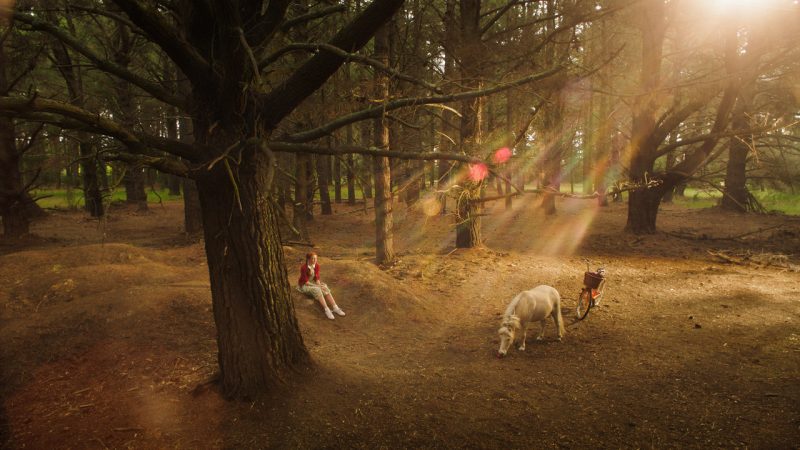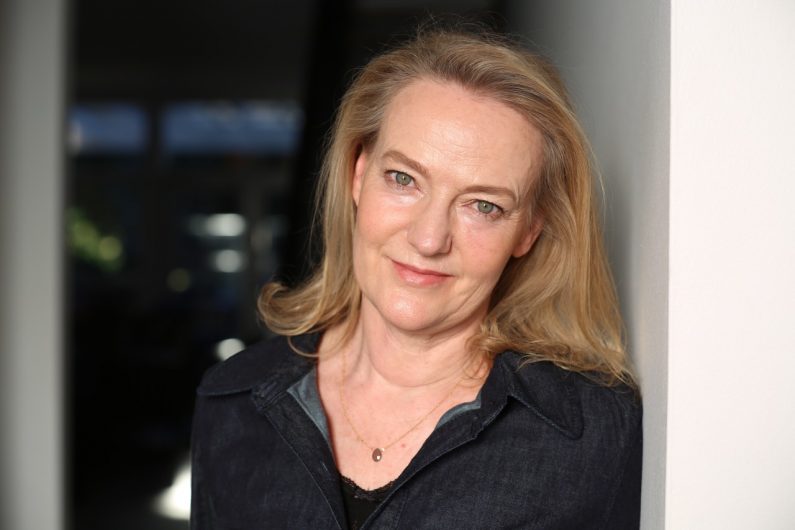IT’S SOMETIMES said that landscape – a sense of place – is effective as a character in film: that film, as a visual platform, captures imagery of the world and describes it back to us. In some movies, landscape and location play a marginal role, if any. Not so in H is for Happiness, a feature film recently shot in Albany, regional Western Australia, where the sense of place suggests much more than just colour and tone. In this movie, Albany is a robust character underpinning the film’s subject, bringing narrative to life.
Claire Hanson spoke to scriptwriter and co-producer, Lisa Hoppe, about her take on Albany’s character and its people and how they influenced the film’s production.
LISA HOPPE, film producer, is a grounded person. She speaks deliberately, clearly and with accuracy. She digests a question, absorbing its intention, and provides considered answers. In a wide-ranging discussion, covering #metoo and the complexities of film production, we covered plenty of ground, Lisa’s replies all well-articulated. But when it came to her experience of filming in Albany over the 2018 Spring and Summer, she enthuses, exuding positivity about the place, its people and their influence on the yet-to-be-released movie.
The backdrop to H is for Happiness is this. Hoppe has a vivid memory of watching small, live-action family films with her own children. She says that, prior to writing this movie’s script, she kept thinking, ‘we’re not making these films in Australia’. Undertaking her masters degree, she spoke to one of her lecturers, arguing there was a gap in the market. He told her to find out why. The result was predictable, if disappointing: “In the school holidays, cinemas are running Disney and Pixar films and it is hard to compete with them. I take my kids to those, but I wanted to take them to see other kinds of films, as well,” Hoppe explains. “So I read dozens of books and My Life As An Alphabet by Barry Jonsberg really moved me. It struck me as having all the elements required to make a commercially viable film of this type. The character of Candice was keeping company with really strong, young, iconic female characters. There was pathos and humour and I loved the dimensions between the characters and their relationships. There are strong journeys for all of the characters.”
So Hoppe went away and did a lot of work in film and television, but she was treading water in a professional sense. “My Life As An Alphabet stuck with me, so I rang the publisher and asked if they still had the book. I asked to option it. I wanted to do another feature film. All the elements came together; wanting to work in that genre, wanting to do a feature film, finding the right book. So I wrote the script for H in about six months. At the end of six months, there was a script competition in the US and I sent it in, thinking they would give me feedback. It came fourth out of 1000 in the US. I used that to get people to read the script. Then Julie [Ryan, of Cyan Films] called me and said she had read it and that she was on board. That was a year and a half ago.”
A lot can happen in 18 months, and it did. In the jigsaw that is film production, Lisa and the H is for Happiness team of collaborators got Screen Australia on board, then attracted an international sales agent and a distributor. Next came more financing, casting and the shoot. But, before that, there was a location to find and it seems there was no competition. “Albany is truly a revelation,” declares Hoppe. “John [Sheedy, director] and Julie came for the first recce. They drove into town and the cinematic look of that storybook town centre captured John’s imagination. Everyone who followed them, including designers, were on the page. It is a very special place and that’s been unexpectedly backed up by this incredible community.”
Hoppe says that the film operates in a slightly heightened world and that Albany’s architecture, its ‘storybook’ ambience and its colour palette “ignited everyone’s imagination and elevated the story.”
“Time works in another way here that really fits with the film,” she says. “The idea is that it doesn’t sit anywhere in particular in time. It’s a timeless story — a story about a family that is struggling and falling apart and a little girl who wants to put it back together. It could be set anywhere.”
But in order to secure more Australian funding, Hoppe had to explain why the film was set in Australia. “It’s because the dimensions of the relationships are very Australian; how Candice relates to her teacher and her father, these things are very Australian.
Then the tone of Albany came into play. She explains, “On a big walk in the morning, people go out of their way to smile and say hello. It’s a thing. In shops, you stop and talk and engage in conversation. Possibly, you can do that because it takes two minutes to get everywhere. I flew back to Sydney last weekend and I spent one day in traffic and kept thinking, ‘What am I doing?’.”
An ambitious film, H is for Happiness will screen in mainstream cinemas in early 2020. Its storyline attracted well-loved adult actors, including international stars such as Miriam Margolyes. Described by Hoppe as “incredible” is the film’s stellar cast, including Australian actors, Richard Roxburgh, Emma Booth, Joel Jackson and Deborah Mailman. “You know you are going to get something amazing from Richard Roxburgh,” she says. “Every scene is perfect. And Joel Jackson, who is from Albany originally, brought something original and unique to his character, who is tricky and awkward. Deborah Mailman is an absolute professional and I was blown away.”
Of the script, Hoppe is unpretentious, revealing that the actors, “said lots of kind things about it. I think [they were attracted to it] because the characters are nuanced and original in their tone. They are not cookie-cutter characters.”
When asked to crystal-ball gaze as to the anticipated response to the movie, Hoppe displays more characteristic modesty, arguing that the movie is based on a fantastic book, so she is grateful to its author, Jonsberg. “There is a clear audience for the film,” she says. “It is a family audience. I remember with my kids, one of the best activities they could do as a group and keep out of trouble — as you didn’t want them wandering around the malls — was to go to the cinema and have a lovely shared experience. I think this film will meet that audience and an audience of parents and grandparents taking slightly younger kids. Our international sales agents have a strategy moving forward. We are hopeful for it to be seen in Australia and around the world.”
Gratefulness is something of a theme with Hoppe, and it is enunciated with a genuine sincerity. She is “terribly grateful” for the filming experience in Albany (and for the support of Screen West), declaring that the crew had a “wonderful time in this magical place.” That experience, she says, carries through into the film. “We have our fingers crossed that we have made something special.”
Hoppe says that, in the film, actor Miriam Margolyes says “A is for Albany” in the first few minutes. We can only be optimistic that the courage taken in filming H is for Happiness in Albany results in a resounding A+ at the box office.



